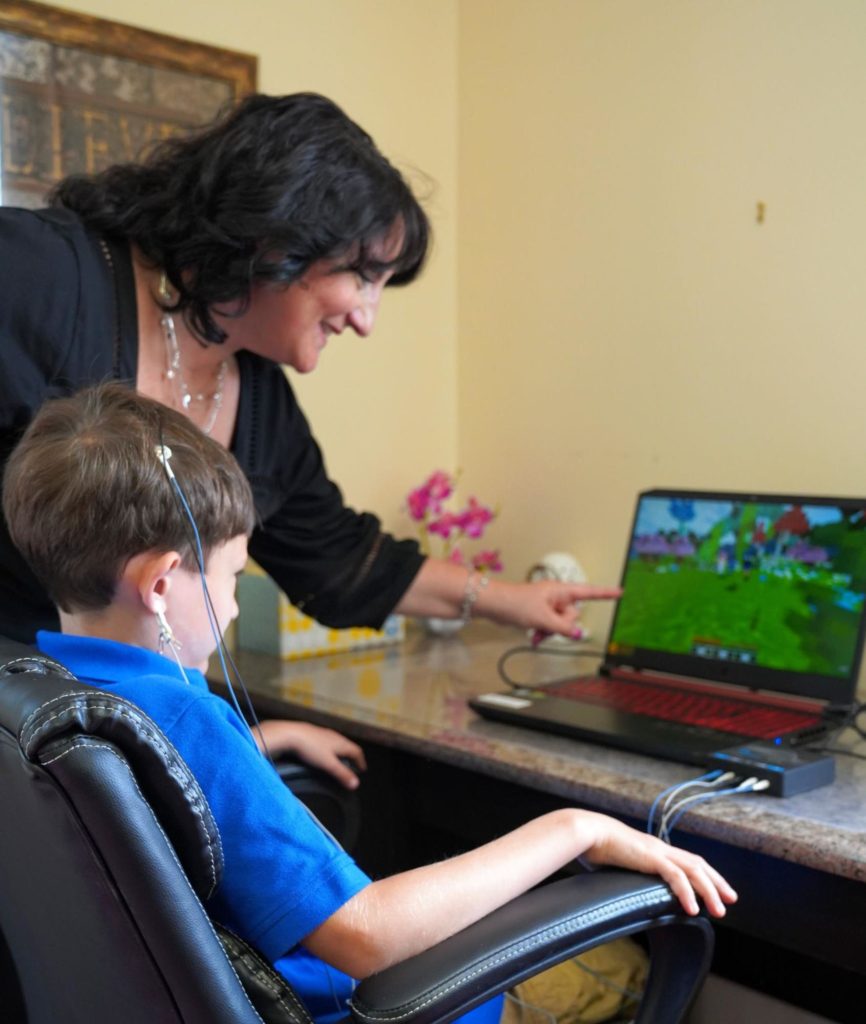For those of us that know and love someone with Lyme Disease or other tick-borne illness, we know all too well the effect it can have on a person’s brain and body. For many, there is an impact on one’s attention, cognitive, or psychological functioning that can make day-to-day living very difficult. The stress of the disease and all of its complications most certainly strains the nervous system and no one can escape the brain fog, anxiety, and fatigue that are par for the course.
What we have learned from psychoimmunology is that when the autonomic nervous system (ANS) is in a hyper stress-activated sympathetic dominant state, not only does a person feel the physical effects of stress, but one’s entire body’s resources kick into gear and “prepare for war.” Unfortunately, untreated or unresolved Lyme is a constant stressor for the ANS and when the body should be using its resources to heal Lyme, it can’t because of this physiological stress response.
No matter how good the care one is receiving, when the ANS is in “war mode”, the immune, hormone and other physiological systems aren’t available to support the body’s own healing mechanisms (Rosen & Donley, 2006). Whether real or imagined, when the body perceives something as a stressor, the central nervous system (CNS) and more specifically the brain, jumps into action and prepares for a crisis, causing the fight, flight, and sometimes freeze response. Even though this is a physiological response, there are ways to calm the ANS and move it from a stressed sympathetic state to a regulated parasympathetic state and allow the healthy functioning to get back online.
How Natural Therapies Can Improve Lyme Disease Symptoms
Through psychoimmunology, or the study of how stress affects our immune system, we know that having a regulated nervous system is critical for physical health. When one has Lyme Disease, high stress is part of the disease, yet we are just in the infancy stages of teaching patients the how and why of improving physical health through science-backed therapies such as neurofeedback, which has been around for decades.
Neurofeedback is an effective tool that I have used for the better part of two decades to help thousands who have had a psychological, cognitive, or behavioral impact from infectious disease. Natural therapies such as neurofeedback, meditation, and breathwork have a proven track record for helping those struggling with chronic disease. Remember, the body can’t heal when it is in a stress state, so supporting the nervous system is a mandatory part of any Lyme Disease treatment protocol.
What is Neurofeedback?
So, what is neurofeedback and why haven’t you heard about it? Very simply, through the use of technology, neurofeedback reinforces and teaches the brain how to self-regulate brain waves so a person can focus, be calm, and process more quickly.
Computers give visual and auditory feedback to the subconscious brain every time it gets into a healthy rhythm and over time, the brain learns to stay in that optimal, regulated state. This form of operant conditioning coaxes the brain to make changes over a series of sessions through this very enjoyable method of constant measurement, reinforcement, and feedback. Neurofeedback gets the brain’s communication system back online so one can think, focus, and not overreact or under-react to stimuli, which means it can address clinical symptoms such as brain fog, sensory sensitivity, anxiety, mood, pain, and sleep problems. Neurofeedback not only impacts brain waves but also influences neurotransmitter activity and calms that nervous system.
Neurofeedback is a wonderful tool that can break the acute stress cycle to help reduce those symptoms that hold one back from living a full life. Over the years, I have used it as a tool to help those afflicted reduce stress and agitation, improve mood, sleep, sensory sensitivity, and focus. It is a tool that can alleviate symptoms so the body can get to the business of healing.
What Does the Research Say About Neurofeedback and Chronic Illness?
Neurofeedback is an evidence-based therapy that has been around for more than 50 years. There are tens of thousands of research studies and more than 3,000 peer-reviewed studies that demonstrate the effectiveness of neurofeedback in treating a variety of clinical symptoms and conditions, such as anxiety, focus issues, PTSD, mood issues, and chronic pain.
With regards to those living with a chronic illness, the research demonstrates that there are positive effects on anxiety, emotional distress in those with cancer, fibromyalgia, fatigue, complex regional pain, depression in those with multiple sclerosis, etc.
Just as with any chronic illness, getting that all-important autonomic nervous system to calm down so the body can address illness is critical and neurofeedback can be that tool for those with tick-borne infection.
Dr. Roseann Capanna-Hodge is an author, therapist, psychologist, board-certified neurofeedback provider, and media personality who has been in/on hundreds of television shows, podcasts, and major publications. Through her Ridgefield, CT center, she works with people all over the world providing neurofeedback in person and in-home neurofeedback virtually. She is highly regarded in the field and due to her level of expertise in Lyme and PANS/PANDAS.
She is a member of The International Lyme Disease and Associated Disease Society (ILADS), International OCD Foundation (IOCDF) International Society for Neurofeedback and Research (ISNR), The Association of Applied Psychophysiology and Biofeedback (AAPB) and on the board of the Northeast Region Biofeedback Society (NRBS).



